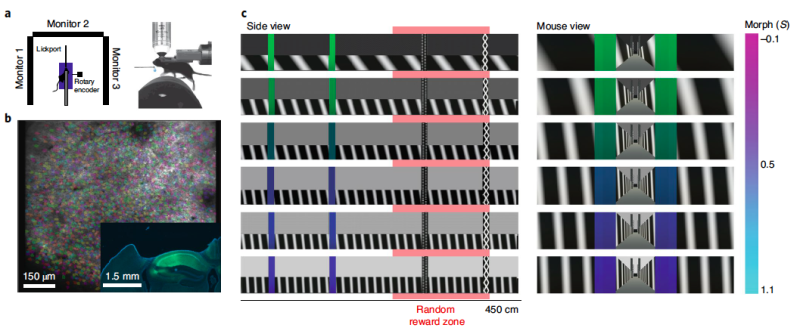April 28, 2021 feature
Study examines experience-dependent contextual codes in the hippocampus

The hippocampus is a brain structure within the temporal lobe known to play a key role in memory and learning. The hippocampus contains neural networks that support what is known as declarative memory. This is the human ability to recall specific facts or events that can be 'declared' consciously, such as names, dates, places, words, etc.
Hippocampal place cells, a specific class of pyramidal neurons in the hippocampus, are known to contribute significantly to aspects of declarative memory. More specifically, these cells become active when some animals and humans access a specific 'place' in their environment, known as the 'place field."
Past studies have found that place cells, together with other kinds of neurons in the hippocampus and in other neighboring brain areas, allow some animal species to create cognitive representations of specific places. They are also believed to play a crucial role in episodic memory (i.e., the ability to recall specific episodes from the past), as they seem to store spatial information related to the environment or place where an event happens.
Researchers at Stanford University have recently carried out a study investigating how contextual features combine to enable what is known as 'hippocampal remapping." This is a process that occurs when humans or animals enter a given environment or move from one environment to another.
"Between environments, place cell firing fields remap (turning on/off or moving to a new location) to provide a population-wide code for distinct context," Mark H. Plitt and Lisa M. Giocomo wrote in their paper. "However, the manner by which contextual features combine to drive hippocampal remapping remains a matter of debate."
Past studies examining the remapping patterns of CA1 place cells and hippocampal neural population dynamics resulting from a change in a person or animal's surroundings have gathered produced findings. In their paper, Plitt and Giocomo hypothesized that hippocampal remapping reflects a probabilistic inference process and that place cells representations are activated based on the probability that an animal or human is in a specific environment.
The researchers conducted an experiment to test this hypothesis. In this experiment, they used a technique called two-photon calcium imaging to gather images of the C1 region in the hippocampus in mice as they were navigating tracks in virtual reality (VR). They then changed how frequently the mice encountered different environmental stimuli and looked at how hippocampal neural activity varied in response to these changes.
"Using large-scale in vivo two-photon intracellular calcium recordings in mice during virtual navigation, we show that remapping in the hippocampal region CA1 is driven by prior experience regarding the frequency of certain contexts and that remapping approximates an optimal estimate of the identity of the current context," the researchers wrote in their paper. "A simple associative-learning mechanism reproduces these results."
In their experiment, Plitt and Giocomo observed that context-specific codes were activated in ways that allowed the mice to best predict what environment they were in. Their findings suggest that place cell remapping in the hippocampus ultimately allows mice and potentially other animals to simultaneously identify their physical surroundings and estimate the identity of the environment they are in.
The results gathered by this team of researchers could have important implications for future research into specific aspects of declarative memory, such as the ability to discern between different environments. In addition, the study conducted by Plitt and Giocomo introduces a framework that could be used to make predictions about how hippocampal population codes are formed and recruited across different contexts with high precision.
More information: Experience-dependent contextual codes in the hippocampus. Nature Neuroscience(2021). DOI: 10.1038/s41593-021-00816-6
© 2021 Science X Network




















